
Vol. VIII, No. 6, November-December 2008
- Editor's corner
- Middle of the road is the road to ruin
- Foundations Entertainment University announces 2009 schedule
- The hybrids are coming
- Dinner and a movie hybrid evolves
- Meet Randy White at IAAPA
- Environment and people: two critical elements of experience
- Books to consider on Gen Y in the workforce
- Review of Lego Discovery Center -- Chicago
- Nurturing children's biophilia
- Birthday party venues get mobile competition
- White Hutchinson expands restaurant services
- No recession for agritainment
- Free food allergy guide
- StoneFire Pizza Co. wins top award
- Networked families
Review of Lego Discovery Center -- Chicago
White Hutchinson's CEO Randy White recently checked out the Lego Discovery Center in Chicago, which is America's first such indoor center. Read on to find out his take on each feature of the new amusement concept based on the classic Lego bricks.
The first American indoor Lego Discovery Center opened in July in the 630,000-square-foot Streets of Woodfield open-air shopping center in Schaumburg, an upscale suburban area of Chicago, Illinois. The two-story, 30,000-square-foot facility is modeled after the Lego Discovery Centre that opened in 2007 in Berlin, Germany. UK-based Merlin Entertainments Group is the developer of both the Berlin and Chicago centers.
In September, I had a chance to visit the Chicago center to see what it was all about. After paying admission, visitors enter through Miniland, a 10-million Lego brick recreation of the Chicago skyline. With the exception of the interactive crane area at the end of the display, the experience is only passive viewing for children. Visitors then are led by a guide into the Jungle Experience, again mostly created from Lego bricks. Children can play a scratch-card game where they have to find answer stations located in the Jungle. Also on the first floor is the Dragon dark ride where visitors view vignette scenes that are -- guess what! -- make from Lego bricks.
Then its up the stairs or elevator to the second floor, where there is a 4-D theater, a simulated Lego Factory, the Physical Play (small soft play structure) and the Lego bricks Build & Test area. The concession stand is also on the second floor.
Generally, I found the entire experience rather disappointing. The majority of the attractions are very simplistic and geared to very young children, 6 years old and younger.
The 4-D cartoon movie (featuring Lego characters, naturally) was very low quality and not up to the standards of today’s 3-D movies produced in Hollywood. The characters did not speak, probably as Merlin decided to save money by making a movie that can be shown in any culture.
The simulated Lego Factory did a poor job of demonstrating how Legos are made. The tour of the small factory area was led by a mad scientist type, Professor Brick-a-Brack. He explained the process, but at more of an adult level, not at a young child’s level. The simulation didn’t actually show Lego bricks being made. Due to the way the area and simulated machinery were designed, some children in a group aren’t able to see everything.
The concession offered little selection, with hot dogs as the featured item. The day I was there, they ran out of one of the two kinds of submarine sandwiches they offered. During the week, the majority of guests are mothers with preschool children. The menu offerings don’t match the desires of mothers, and there were no healthy offerings for children. The seating adjoins the Build & Test area with no clear divider, so the Legos and children playing often spill over into the seating area.
The only part of the center that holds appeal for grade school children and older is the Build & Test area. At an earthquake area, visitors can construct a building on a table and then have the table shake to see if the structure could survive. At several test track areas, you can test the speed of vehicles you built from Legos. Tables allowed children and parents to work together with Legos. The Build & Test area was very busy.
Of course, when visitors leave, they exit through the Lego retail store.
Admission to Lego Discovery Center is $19 for adults and $15 for children 2-12. I received feedback from mothers who had attended, and most felt the price was too high. Since I attended, the weekday price has been reduced to $14 for adult and $10 for children.
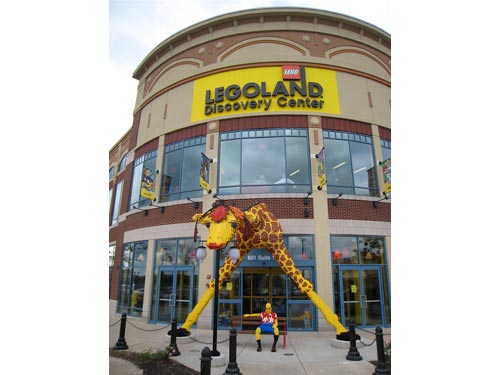
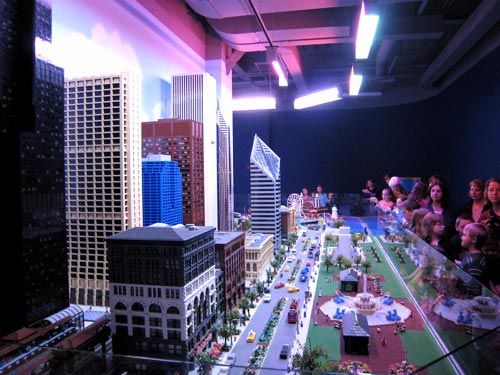
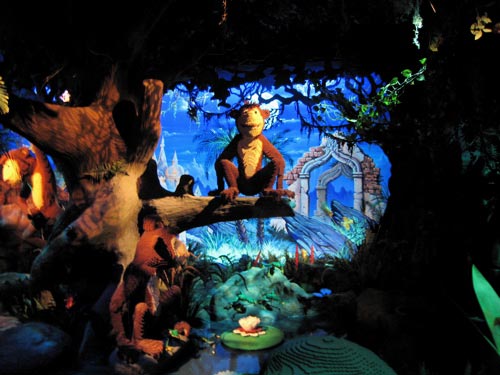
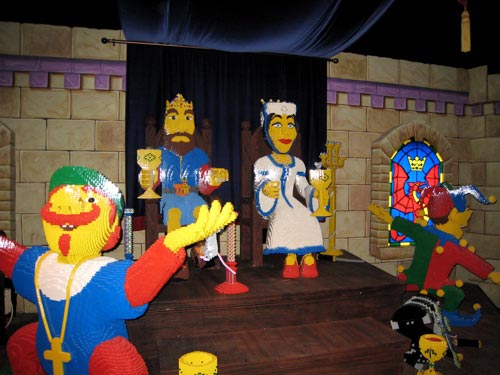
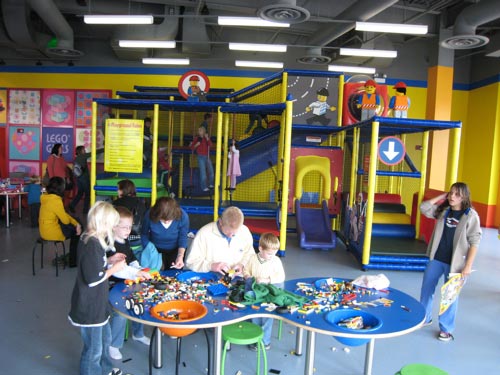
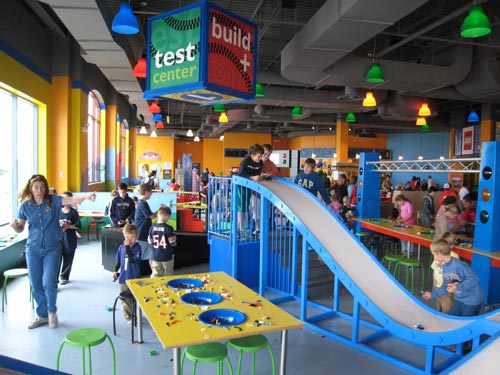
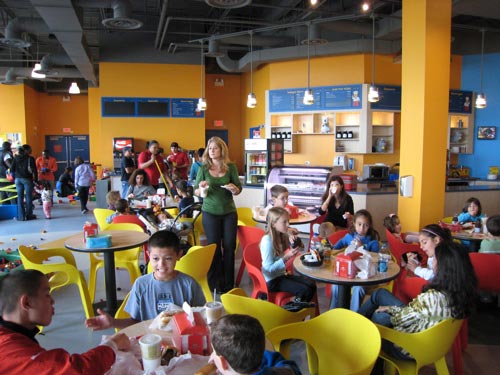
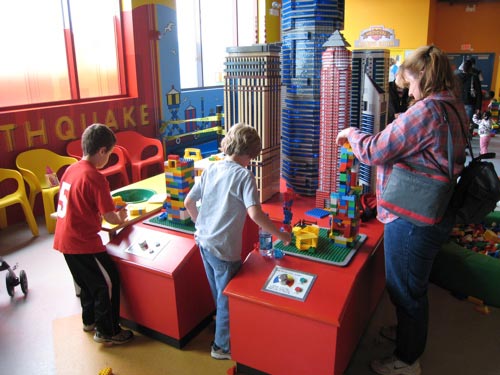
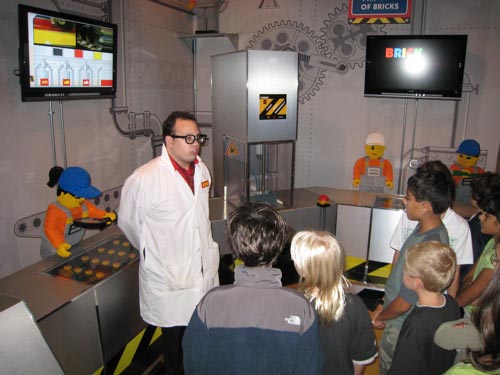
You have to commend Merlin for trying to develop a new indoor entertainment concept. However, in my opinion, Lego Discovery Center needs a lot of work to succeed long term in the American market. It may work in some foreign markets like Germany, where there are far fewer indoor entertainment venues for children. However, in America, entertainment customers are far more sophisticated and discriminating.
One problem with the center is repeatability. There is little repeat appeal except for the Build & Test area. And many of its activities can be found for free in some Lego stores. Another problem is price. Even at the new reduced weekday price, the 2- to 2.5-hour experience costs almost twice that of a movie admission with a similar length-of-stay. I don’t see where the center offers value that equals even the reduced weekday price. And the food makes you want to leave to eat elsewhere. I felt sorry for the moms with young children who got stuck there at lunch time.
A major flaw is that the center targets young children, yet too many of the attractions are passive with no hands-on interaction. This is a common problem with many entertainment venues that try to appeal to young children. They fail to understand the significance of offering a high degree of hands-on interactive play and activities.
Lego Discovery Center has a similar challenge to that faced by The Walt Disney Company with DisneyQuest: trying to reduce a large theme park type experience and pack it into an indoor venue. If you have been to Walt Disney World or Disneyland, or to a Legoland amusement park, you compare the experiences, and the smaller indoor venue invariably ends up being perceived as inferior. This especially holds true if the attractions and facility are built with a lower level of finish and a lower budget per square foot.
Lego Discovery Center may do well in a tourist location, where you don’t have to depend on repeat business. But in an upscale suburban area like northwest Chicago, where the bulk of business needs to come from residents, the limited age appeal, non-repeatability, price point and negative word-of-mom can kill you before you even get a good start.
Lego has a great brand franchise. We hope Merlin will be able to evolve Lego Discovery Center to live up to the highly perceived brand value that Lego and Legoland have created over the years. We also hope Merlin will not make the mistake Discovery Zone made in not testing and perfecting the concept before a major rollout.
Vol. VIII, No. 6, November-December 2008
- Editor's corner
- Middle of the road is the road to ruin
- Foundations Entertainment University announces 2009 schedule
- The hybrids are coming
- Dinner and a movie hybrid evolves
- Meet Randy White at IAAPA
- Environment and people: two critical elements of experience
- Books to consider on Gen Y in the workforce
- Review of Lego Discovery Center -- Chicago
- Nurturing children's biophilia
- Birthday party venues get mobile competition
- White Hutchinson expands restaurant services
- No recession for agritainment
- Free food allergy guide
- StoneFire Pizza Co. wins top award
- Networked families


